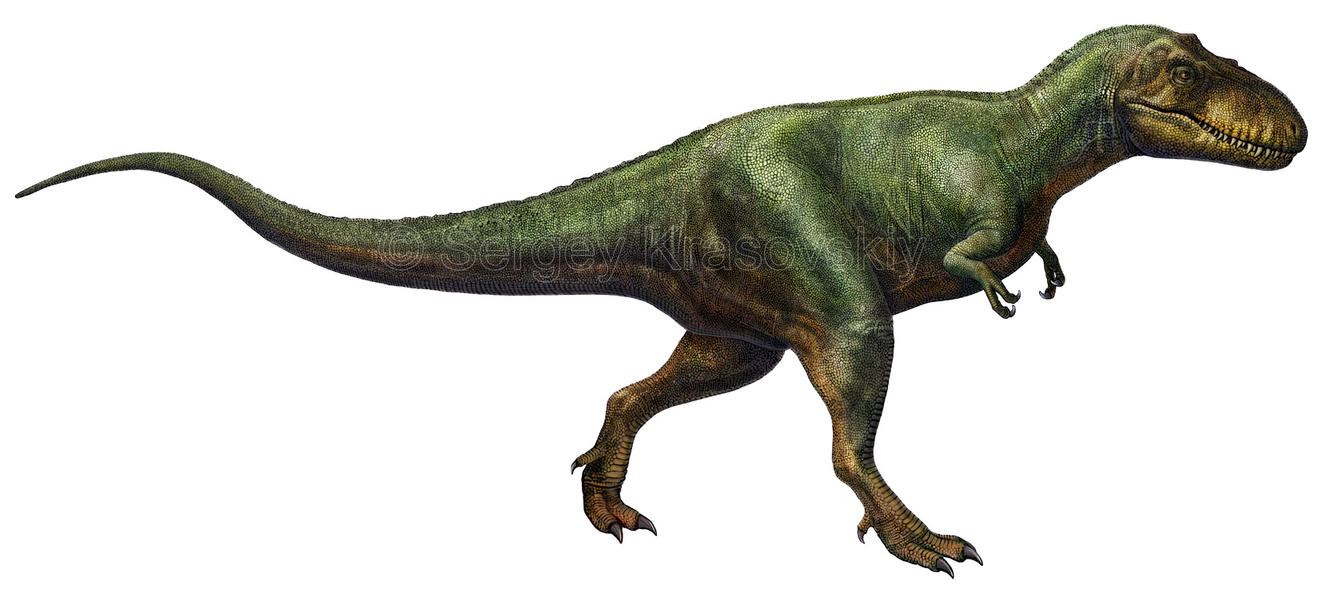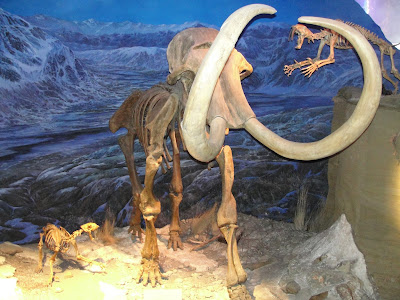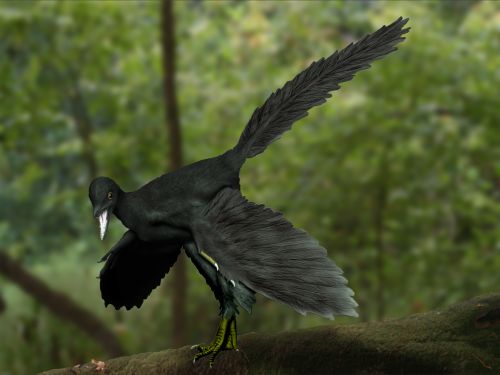This is sort of a followup to a note I made on my first post, but you don't need to see that to understand this.
Basically, there's a number of common arguments as to why feathering animals like
Tyrannosaurus makes no sense, and a lot of them are logically flawed or downright incorrect. This post is to try and lay out why these are incorrect without simply saying they are.
First off, the most common reason;
"They were too big to have feathers, it'd make them overheat!"
This is particularly weird, as it's often paired with comparisons to modern-day elephants and rhinos, which immediately brings up a glaring flaw; the animals have
nothing in common in terms of body shape. Elephants have a highly-concentrated surface area; this is because...well, they're basically giant squares on legs. They're thick and dense as well as big, which is why they reduced their integument. Same applies to the rhinoceros; it's a walking rectangle, essentially.
By contrast,
Tyrannosaurus had a much higher surface area because of it's large, long tail, meaning it has less to worry about when it comes to heat. Also, feathers have been proven multiple times to be a better thermoregulatory structure than hair, so the comparison fails in that regard, too. Even if they didn't have any feathers (which is unlikely), they'd be looking more like plucked chicken than an elephant's hide.
 |
| Above: What a featherless Tyrannosaurus would more likely look like. Not exactly scarier, is it? |
Basically,
DO NOT USE LARGE MAMMALS FOR YOUR DINOSAUR THERMOREGULATORY COMPARISONS. THIS IS A BAD IDEA AND IT'S INACCURATE. Mammals and dinosaurs have
extremely different thermoregulatory systems, so comparing them directly is not accurate. A more logical comparison would be crocodilians and birds, both being the closest living relatives to any dinosaur. However, birds are preferable to crocodiles; as they are closer in niche to most dinosaurs.
....ahem. Anyways, onto the next point!
"Feathers are lame, I don't see birds as being scary!"
 |
| Nope, not scary. Totally not scary at all. (Credit goes to FredtheDinosaurman on DeviantArt for this lovely image!) |
I've always seen this argument as particularly dumb, as it's entirely bias. Feathers do not make something less scary, that's just flat-out
idiotic. It's like if I said grizzly bears were dumb because they were all poofy and not naked, slimmed-down beasts when one came barreling towards me. You aren't going to give a crap about what the
T.rex bearing down on you is covered in, you're going to run like hell regardless because it's
A GIANT ANIMAL TRYING TO EAT YOU. That's natural instinct.
Besides, who says everything predatory has to be scary? Look at how popular the potoo has gotten, and it's a predator who look like
THIS;
 |
| This is the face of a real American hero. Just without the Texas government sort of erupting from it's brain like a horrific tumor. (Thanks to GravityKitty on imgur for the image!) |
That's the opposite of scary, and yet people love it anyways; so why are people so adamant about not feathering tyrannosaurs? Well, there's another reason that comes up a lot for that...
Science ruined dinosaurs! First they say Brontosaurus and Triceratops don't exist, now they're trying to destroy the awesome theropods!
First,
you're actually wrong about Brontosaurus not existing, and
Triceratops was never in danger of being sunk into another genus (
Torosaurus was the one proposed to be sunk into
Triceratops), and second of all, there's no reason everything needs to
look awesome to
be awesome. This is commonly known as the "awesomebro" argument, as it entirely hinges on the idea that dinosaurs need to look scary to sell; an idea unfortunately regurgitated by Hollywood. This is, of course, a dumb argument that hinges on opinion, but the
real kicker is saying that featherless theropods aren't awesome.
Fun fact; a featherless
Velociraptor can't climb a vertical wall. A featherless
Velociraptor doesn't have the ability to use Raptor Prey Restraint and eat it's prey alive. These are all awesome traits that the leathery raptors of the early 1990's simply cannot physically do, but modern feathered ones can. We've only made even more awesome discoveries about dromaeosaurs
once we figured out they were all feathered. Sure, they aren't popping open doors to devour screaming children, but the idea of a
Utahraptor climbing a tree by simply walking up it and flapping it's wings is even scarier...especially once you take into the account the fact that dromaeosaurs were no slouches in the bite department; in fact, the eponymous genus of the family,
Dromaeosaurus, has a very reduced "sickle" claw and instead has very robust jaws, suggesting that it was not using RPR as much as other dromaeosaurs, and instead just used it's powerful jaws to kill it's prey by snapping their necks or skulls.
But honestly,
Tyrannosaurus ripping the heads of
Triceratops corpses off is awesome, no matter what integument it's covered in. Awesomeness is subjective, anyways, so this is also an opinion-based argument.
But this only really brings up an important flaw; the public perception of dinosaurs. The media does little to help, but when what Joe Shmoe thinks is
over a decade behind what the scientists know, that isn't just being inaccurate anymore; that's closer to misinformation.
We're hitting what many people are calling the "Soft Dinosaur Renaissance"; a point in which many fossil discoveries
completely change the way we look at dinosaurs. First it was colors in feathered dinosaurs, then it was feathery tyrannosaurs that were 30 feet long, then it was dodo-like dromaeosaurs, then it was herbivorous tetanurans, then it was bat-winged dinosaurs. Keep in mind, all of these were found in the last 6 years! These animals are the sort of things that Dougal Dixon would have thought up in his lunch break, but they're quite real, and definitely prove dinosaurs were, and indeed still are, an enormously
strange group of animals.
And honestly, isn't oddity so much more
engaging than yet another cheap scare? We're naturally drawn to the bizarre and strange; it's why cryptozoology is such an easy field to enter. So if we like the unusual, why is it that people are against feathered tyrannosaurs?
Because people also like their childhoods. This is the same idea as what causes, say, a Transformers fan to cry "Ruined FOREVER!" when they sees something they don't like in the franchise; they're attached to their childhood nostalgia and don't want it to be "replaced". Same thing with feathered dinosaurs; people don't want feathered dinosaurs to "replace" the scaly ones they were fond of, and so they adamantly try to defend their nostalgia. However, their fight may be futile; as future generations become more exposed to feathered dinosaurs, that view will become the new "normal", and scaly theropods become the new tripodal theropods. This is inevitable as long as children are exposed to feathered dinosaurs in media.
Complaining does absolutely nothing, because science has already heard your complaints; and it
doesn't care. As an ever-evolving medium, science cannot backtrack to when convenient. And it is no longer convenient to backtrack to the early 1990's.



































































